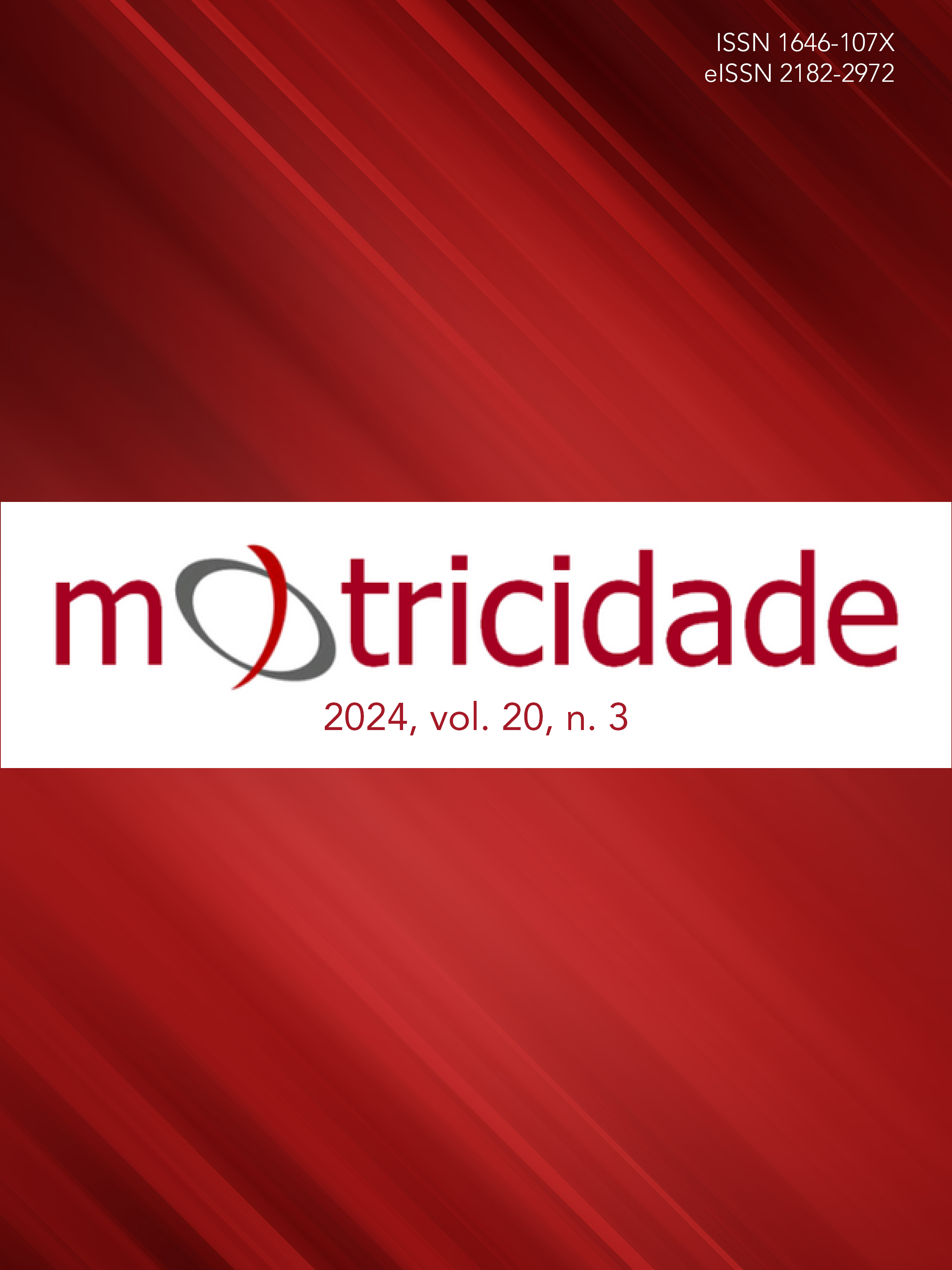Muscularity-oriented disordered eating and symptoms of muscle dysmorphia in insufficiently active and physically active men
DOI:
https://doi.org/10.6063/motricidade.33616Keywords:
Feeding behaviour, body image, menAbstract
The aim of this study is to evaluate muscularity-oriented disordered eating and symptoms of muscle dysmorphia in men aged between 18 and 59 years. This is a cross-sectional, comparative and quantitative study, with online data collection using the MDDI- Muscle Dysmorphic Disorder Inventory and MOET- Muscularity Oriented Eating Test instruments. Statistical analyses were performed using the SPSS program, with a p≤ 0.05 adopted to determine the significance level. The results were obtained with the sample of 427 men, separated into three groups: bodybuilding practitioners (BPG; n=145), an insufficiently active group (IAG; n=124) and a group of practitioners of other modalities (GPOM; n=158), pointing out by analysing the total scores of the MOET and MDDI instruments that there is a significant difference (p = 0.001) between the groups. The BPG group has a higher average than IAG and GPOM (p = 0.001 for both), suggesting that BPG is more concerned with eating aimed at muscle hypertrophy and symptoms of muscle dysmorphia than the other groups. It is intended that the results of the study will allow health professionals to have an appropriate approach to individuals who have disordered eating and muscular dysmorphia.
Downloads
Published
Issue
Section
License
The authors of submitted manuscripts must transfer the full copyright to Journal Motricidade / Desafio Singular Editions. Granting copyright permission allows the publication and dissemination of the article in printed or electronic formats and copyrights start at the moment the manuscript is accepted for publication. It also allows Journal Motricidade to use and commercialize the article in terms of licensing, lending or selling its content to indexation/abstracts databases and other entities.
According to the terms of the Creative Commons licence, authors may reproduce a reasonable number of copies for personal or professional purpose but without any economic gains. SHERPA/RoMEO allows authors to post a final digital copy (post-printing version) of the article in their websites or on their institutions' scientific repository.


